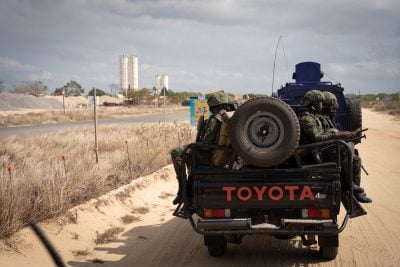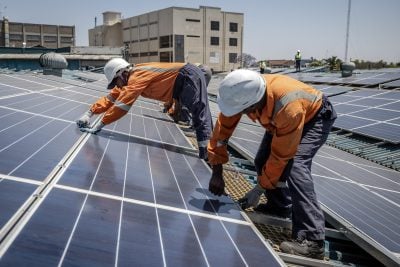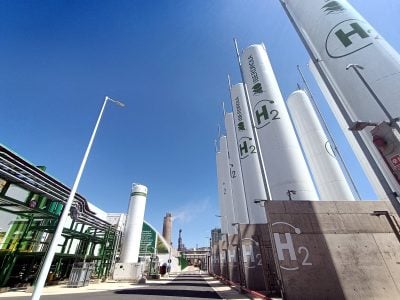In November 2021, a glimmer of good news in the fight against Covid-19 on the African continent was announced. Africa’s largest pharmaceutical company, South Africa’s Aspen Pharmacare, signed a licensing deal to produce Johnson and Johnson’s (J&J) one-shot Covid-19 vaccine as a fill-and-finish and to sell it within Africa and potentially beyond as the Aspen-branded Aspenovax.
This signing followed a few other similar announcements – for instance between Chinese and Moroccan manufacturers – all aimed at locally manufacturing Covid-19 and other vaccines on the continent. From an African perspective, expanding local manufacturing capacity would be crucial to avoid future challenges of hoarding vaccines by non-African countries – a practice that harmed African health security as Covid-19 spread.
However, unlike other local manufacturing agreements, the South African agreement moved swiftly. The new factory was opened at Gqeberha (Port Elizabeth) at a cost of R3bn ($190m), and 500 staff were trained for vaccine production. The facility was projected to make up to 300m doses per year and built on Aspen’s existing expertise producing antiretrovirals and tuberculosis medication. By December 2021, the factory had already processed 120-180m J&J doses, which had been ordered and sent to the African Union’s pooled procurement facility for distribution to African states. With the new commercial deal, Aspen could continue this but also distribute the vaccine more independently.
However, at the time of writing, the factory has still not received a single order for Aspenovax. According to Stavros Nicolaou, Aspen’s head of strategic trade development, if this remains the case for much longer, the facility will be converted to produce anaesthetics and other drugs, raising concerns about possible job and technical skill losses.
Business case for local manufacturing under threat
While this would be a loss itself, the perhaps more significant loss may be for the entire business case for the local manufacturing of pharmaceuticals. If one fill-and-finish factory cannot survive, how can others? What business case is there for even more complex and costly local pharmaceutical manufacturing processes where research and development is conducted, and materials are originated and processed within the continent?
The fact is that the plan for local manufacturing is not new. It has been a long-standing African policy. The 2012 Pharmaceutical Manufacturing Plan for Africa (PMPA), agreed between AU heads of state, had the aim to improve access, quality and affordability of pharma products, while supporting sustainability, competitiveness and self-reliance in the industry.
Covid-19 has created a new urgency. The African Union and African Centres for Disease Control and Prevention (Africa CDC) have called for a “New Public Health Order” as the continent strives towards the Agenda 2063 development goal. In March, the Partnerships for African Vaccine Manufacturing (PAVM) published a Framework for Action including eight programmes with a clear target – to enable the African vaccine manufacturing industry to develop, produce, and supply over 60% of vaccine doses required on the continent by 2040.
The crowding-out effect
So how do Aspen’s early challenges fit into this framework? Will the new framework be just another plan that never goes into implementation, something Africa is famed for?
We have been here before. The fact that Africa represents only 3% of global drug production while importing more than 80% of its consumed pharmaceutical goods has not happened by accident. It is by design. And it is this design that needs undoing for the Aspen factory and – by extension – the Framework for Action to succeed.
The challenge with all the longstanding efforts is that the actions of non-African, external actors have not been factored in. As we explain in a forthcoming report on this issue, pharmaceutical manufacturing on the African continent can be traced as far back as 1930, when multinational corporations began to set up subsidiary operations in African colonies.
The leading countries for these pharmaceutical startups were Kenya, South Africa, Nigeria and Zimbabwe. Along with Egypt, Morocco, Algeria and Ghana they remain the major hubs for the 600-1000 pharma manufacturers in Africa. Over 80% of the continent’s manufacturers are located in these eight countries, with about 22 countries having no local production at all.
These manufacturers consistently struggle to scale up, because of the impact of imports, in particular procurement from what are known in global health as “The Big Five” – the Global Fund, Gavi, Unicef, UNFPA, and Pepfar. The Covax scheme to source Covid-19 vaccines for less developed countries represents a new addition.
Pooling orders to suppliers doesn’t work
The theory behind these funds is that pooling orders to suppliers – whether from India, the US, Europe or even African countries – will drive down prices and enable these pharma products to be “accessible” at a low cost (or for free if paid for by grants from OECD donors) in relatively poorer countries. The problem with this theory is two-fold.
First, it suffers from what economists might call “the fallacy of ceteris paribus” – the assumption that everything else is equal. What we have learnt in a very stark manner through Covid-19 is that this assumption is wrong. At the beginning of Covid-19, wealthier countries hoarded vaccines. Even today Africans have only been able to access an average of 0.5 vaccine doses each versus European or American citizens who have accessed at least three doses per person. Low prices don’t matter if supplies or distribution aren’t there.
Second, the theory omits the well-known business phenomenon of “crowding-out”. Pooled global procurement can crowd out local manufacturing in Africa, especially at early stages before scale-up, where production costs are necessarily high, before efficiencies set in. Without active management, global procurement can reinforce established vaccine supply chains, which are heavily skewed to non-African producers. We have seen this with Covid-19. Of the estimated 1.3-2bn doses supplied by Covax in the past 15 months, none have been obtained from African manufacturers.
Thus, the global funds can end up harming health security in Africa rather than building it, and can be seen as being inconsistent with African development plans.
Swift action needed
So what is the answer? The key to ensuring that these plans are realised lies outside Africa – within the boards of the Big Five and Covax.
For local manufacturing to succeed, all these boards must take swift action to address their crowding out effects, and instead use their procurement power to enhance African health security. They must not just “aspire to support local markets” – as Gavi says it will do through capacity building – but explicitly incorporate African manufacturing targets into their design. Doing so will not only build African health security, but also support the growth of the African Continental Free Trade Area (AfCFTA) and create space for African-made vaccines to enter global markets.
Until then, the dreams behind the Aspen factory and other new facilities – and by extension Africa’s health security – hang in the balance.
Want to continue reading? Subscribe today.
You've read all your free articles for this month! Subscribe now to enjoy full access to our content.
Digital Monthly
£8.00 / month
Receive full unlimited access to our articles, opinions, podcasts and more.
Digital Yearly
£70.00 / year
Our best value offer - save £26 and gain access to all of our digital content for an entire year!
 Sign in with Google
Sign in with Google 



